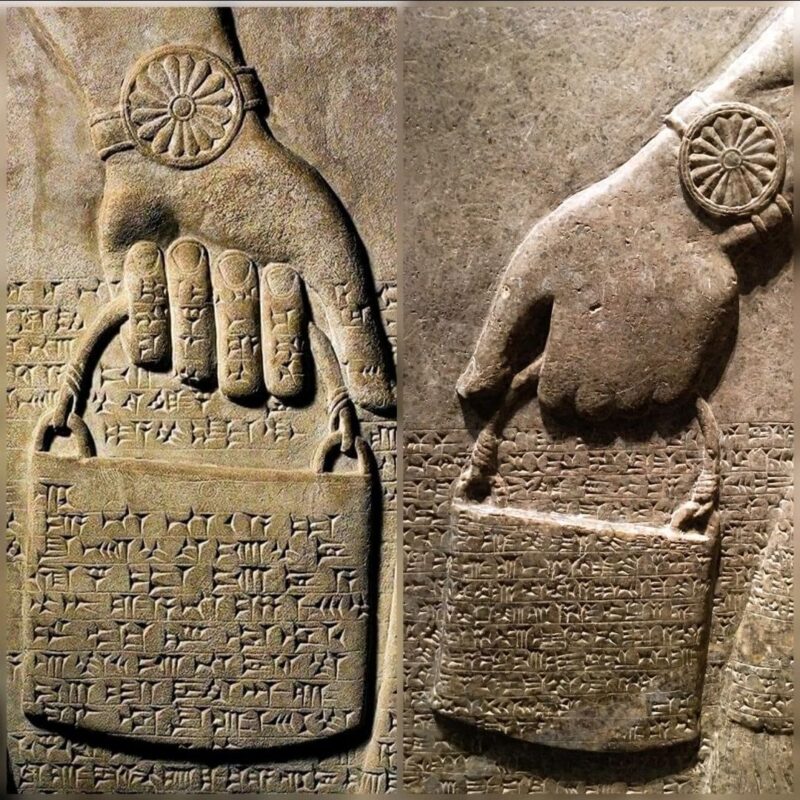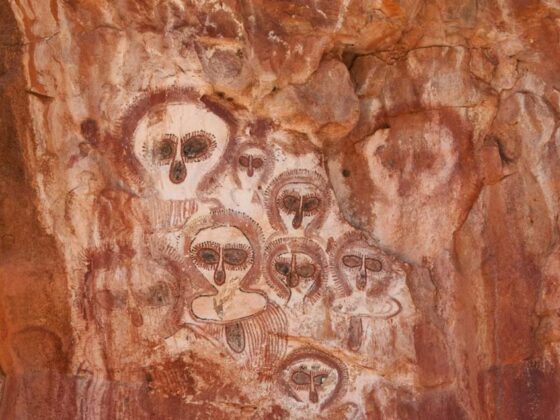Throughout the ancient world, from the sun-baked plains of Mesopotamia to the lush jungles of Central America, a curious motif appears in artwork and carvings: deities and mythical figures holding what modern observers have dubbed “handbags.” These mysterious objects, far from being mere decorative elements, have sparked intense debate and speculation among archaeologists, historians, and enthusiasts of ancient mysteries. Their prevalence across diverse cultures and vast geographical distances raises intriguing questions about their significance and the possibility of ancient global connections.

At the heart of this enigma lies Göbekli Tepe, an archaeological site in southeastern Turkey that has revolutionized our understanding of prehistoric human civilization. Dating back to around 10,000 BCE, this ancient temple complex predates pottery, metallurgy, and even agriculture. Among its many wonders are massive T-shaped pillars adorned with intricate carvings. On one such pillar, known as Pillar 43, we find three distinct “handbag” symbols etched into the stone. These objects, with their curved tops and rectangular bottoms, bear an uncanny resemblance to modern purses or satchels.
But Göbekli Tepe is far from alone in featuring these enigmatic accessories. In ancient Mesopotamia, the cradle of civilization, we find numerous depictions of gods and mythical beings carrying similar objects. The Assyrian relief of the “Winged Genie,” dating to the 9th century BCE, shows a divine figure holding what appears to be a pinecone in one hand and a bucket-like object in the other. This bucket, or “handbag,” is a recurring element in Mesopotamian art, often associated with purification rituals or the bestowal of wisdom.
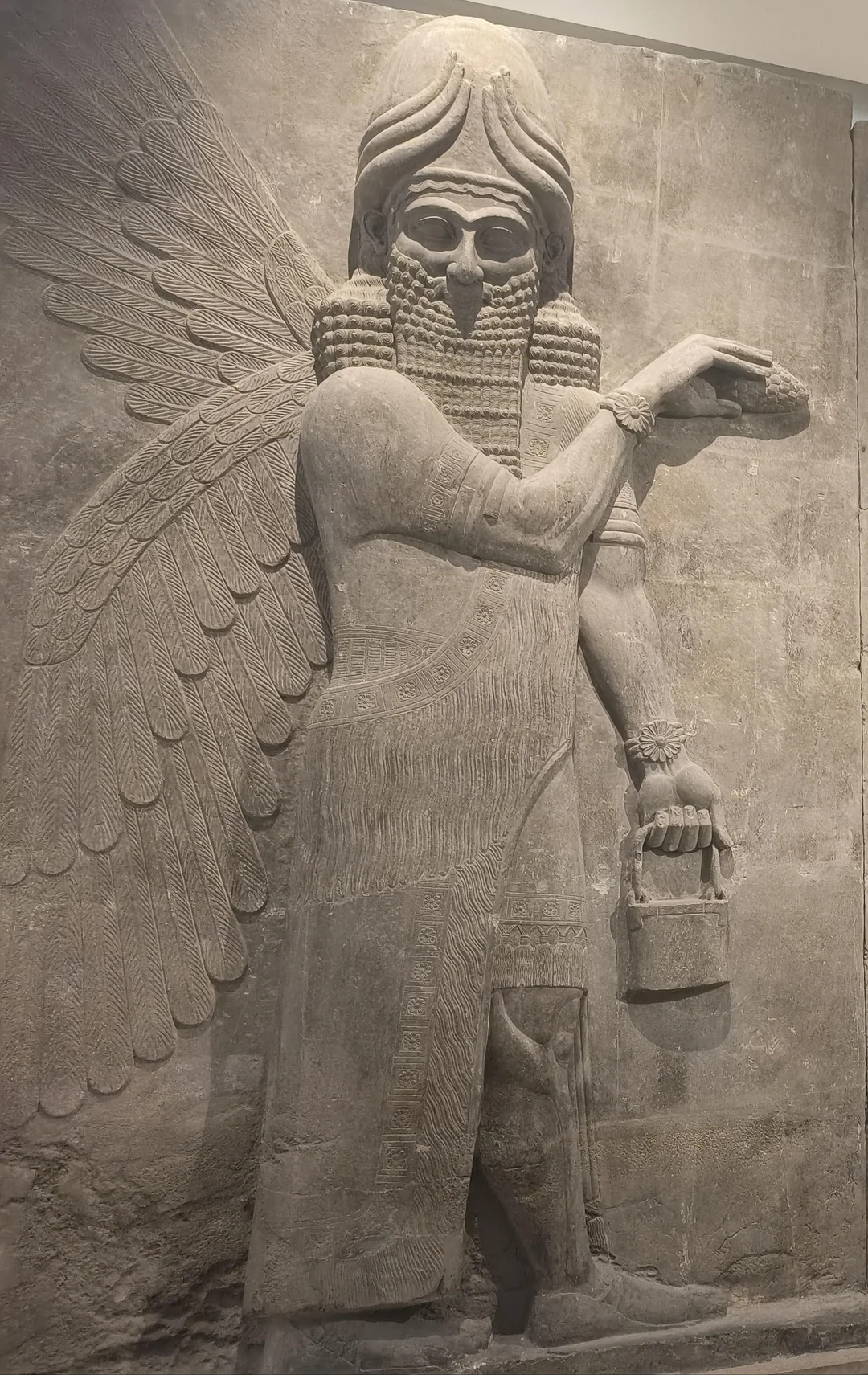
Crossing the Atlantic, we encounter the same motif in the art of ancient Mesoamerica. The Olmec civilization, considered the “mother culture” of the region, left behind numerous stone carvings and figurines depicting rulers or deities holding these mysterious bags. One of the most famous examples is Monument 19 from La Venta, showing a figure in elaborate regalia clutching a handbag-like object. The Maya and Aztec cultures that followed continued this tradition, with their gods often portrayed carrying similar accessories.
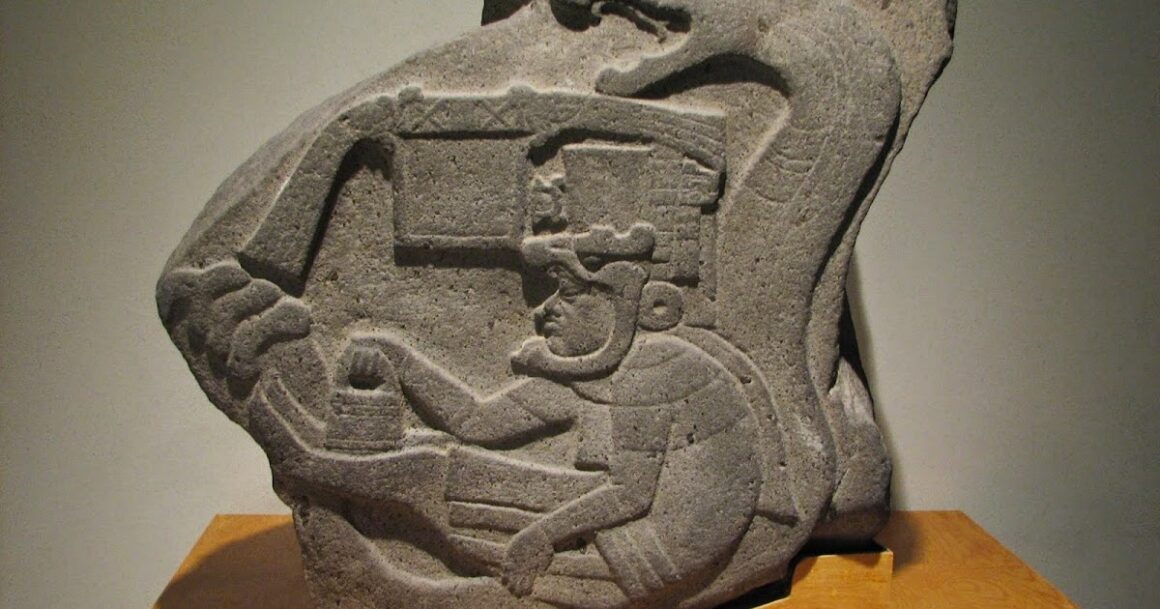
The presence of these “handbags” is not limited to the Old and New Worlds. In ancient Egypt, the god Anubis is sometimes depicted holding an object resembling a purse, thought to contain sacred oils or unguents used in mummification rituals. In India, Hindu deities like Shiva and Ganesha are occasionally shown with bag-like objects, though their interpretation varies widely among scholars.
Even in the far-flung corners of the Pacific, we find echoes of this global phenomenon. Maori mythology speaks of Tāne, the god of forests and birds, who ascended to the heavens to retrieve three baskets of knowledge. While not directly depicted in ancient art, this story bears a striking resemblance to the concept of divine beings carrying containers of wisdom or power.
So what are we to make of these ubiquitous “handbags”? The theories are as varied as the cultures that depicted them. Some researchers argue that they represent containers of cosmic knowledge or divine wisdom, bestowed upon humanity by the gods. Others suggest they might symbolize the fruits of agriculture or the bounty of nature, especially given their frequent association with fertility deities.
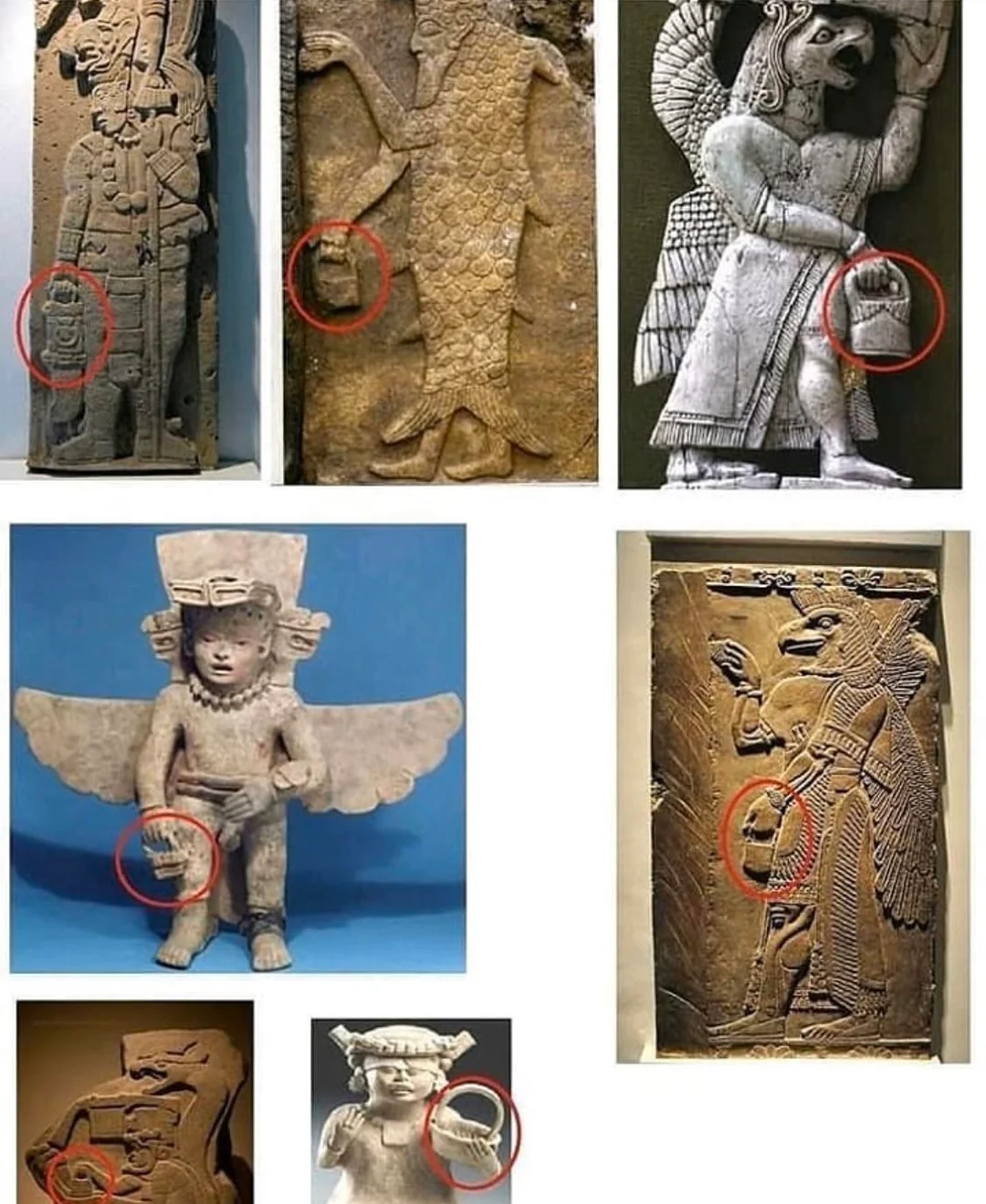
A more esoteric interpretation proposes that the handbags are actually stylized representations of the human heart or soul, carried by divine beings as symbols of their power over life and death. This theory gains some traction when we consider the importance of the heart in many ancient belief systems, from Egyptian concepts of the afterlife to Aztec ritual sacrifices.
Skeptics, however, caution against reading too much into these similarities. They argue that the “handbag” shape is simply a convenient way to depict a generic container and that its appearance across cultures is more coincidental than meaningful. After all, humans have been carrying things in bags for millennia – perhaps it’s not so surprising that our ancestors would imagine their gods doing the same.

Yet the persistence of this motif across such vast distances and diverse cultures is hard to dismiss entirely. Could it point to some long-forgotten connection between ancient civilizations? Or does it reflect a universal human tendency to conceptualize divine power in terms of tangible objects?
The debate is further complicated by the fact that we often lack crucial context for these ancient artworks. Many of the cultures that created them left no written records explaining their symbolism, leaving us to speculate based on fragmentary evidence and comparisons with better-documented societies.
One intriguing theory suggests that the “handbags” might represent some form of ancient technology, now lost to time. Proponents of this idea point to the consistent shape and size of the objects across cultures, arguing that they might have been portable power sources or communication devices gifted to humanity by advanced beings. While this notion veers into the realm of ancient astronaut theories, it highlights the enduring mystery surrounding these artifacts.
A more grounded interpretation focuses on the practical and symbolic importance of containers in ancient societies. In a world where the ability to carry and store resources could mean the difference between survival and starvation, bags and baskets would have held immense practical and symbolic value. Perhaps the “handbags of the gods” represent this essential aspect of human civilization, elevated to the divine realm.

The association of these objects with wisdom and knowledge is particularly intriguing. In many depictions, the gods seem to be offering or presenting the handbags, as if bestowing some precious gift upon humanity. This echoes countless myths and legends about divine beings imparting crucial knowledge or skills to early humans, from Prometheus stealing fire for mortals to the Chinese goddess Nüwa teaching people how to make music.
Interestingly, the handbag motif often appears alongside other recurring symbols in ancient art. The “tree of life,” for instance, is another near-universal concept that frequently shares space with the divine handbags. This association might suggest a connection to ideas of fertility, abundance, and the cyclical nature of existence – all crucial concepts in early agricultural societies.
The pinecone, mentioned earlier in relation to Assyrian art, is another symbol that frequently appears in conjunction with the handbags. Often interpreted as a representation of the pineal gland or “third eye,” the pinecone has been associated with enlightenment and spiritual awakening in various traditions. Could the combination of handbag and pinecone symbolize the containment and dispensation of divine wisdom or altered states of consciousness?

As we delve deeper into this mystery, it’s important to consider the role of trade and cultural exchange in the ancient world. While the distances between some of these civilizations seem vast by modern standards, evidence suggests that long-distance trade routes existed far earlier than previously thought. The discovery of cocaine and nicotine traces in Egyptian mummies, for instance, hints at possible trans-Atlantic contact long before Columbus. Could the spread of the handbag motif be evidence of even more extensive ancient networks of communication and exchange?
The implications of such connections are profound. If ancient cultures were indeed in contact across vast distances, it challenges our understanding of prehistoric human capabilities and the development of civilization itself. The idea that our ancestors might have shared complex symbolic systems and religious concepts on a global scale is both exciting and unsettling, forcing us to reconsider many of our assumptions about the ancient world.
Yet we must also be cautious about drawing too many parallels or making sweeping generalizations. The human mind has a tendency to see patterns where none may exist, and the similarities between these ancient depictions might be more apparent than real. Cultural anthropologists warn against the dangers of oversimplification and the imposition of modern interpretations on ancient symbols whose true meanings may be lost to time.

Despite these cautions, the mystery of the divine handbags continues to captivate researchers and enthusiasts alike. Each new discovery, from a previously unknown carving in a remote jungle temple to a reinterpretation of familiar artifacts, adds another piece to this global puzzle. The search for answers has led scholars to explore not just archaeology and history, but also comparative mythology, linguistics, and even cutting-edge theories in physics and cosmology.
As we continue to unravel this enigma, we’re left with more questions than answers. What did these handbags mean to the people who carved them into stone millennia ago? Were they symbols of divine power, repositories of cosmic wisdom, or something else entirely? And why do they appear with such consistency across cultures that, as far as we know, had no contact with one another?
Perhaps the true significance of the handbags of the gods lies not in their original meaning, but in the questions they prompt us to ask about our shared human heritage. They remind us that, for all our technological advances and scientific understanding, there is still much about our own past that remains shrouded in mystery. These ancient symbols challenge us to look beyond the boundaries of our current knowledge and consider the possibility of forgotten connections and lost wisdom.
In the end, the enigma of the divine handbags serves as a humbling reminder of the vast depths of human history and the enduring power of symbols to captivate our imagination. As we continue to explore and interpret these ancient artifacts, we’re uncovering the secrets of the past and we’re also gaining new insights into the shared hopes, fears, and aspirations that have shaped human culture for millennia. Whether they represent cosmic knowledge, divine power, or simply the universal human need to carry our most precious possessions, these mysterious handbags continue to intrigue and inspire us, bridging the vast gulfs of time and culture that separate us from our ancient ancestors.
